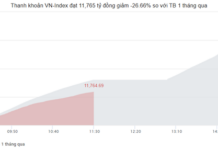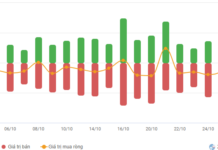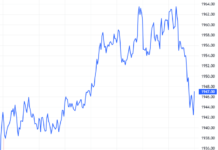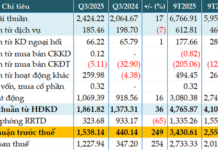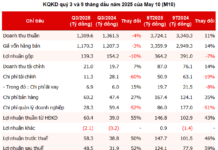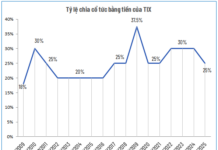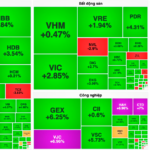Mr. Nguyen Quang Huy, CEO of Finance and Banking at Nguyen Trai University, predicts that domestic gold prices are unlikely to drop immediately in the short term. He attributes this to the strong brand recognition of SJC gold bars and the time needed for new brands to establish their quality and liquidity.
“Market dynamics will keep prices high in the near term,” Mr. Huy states. “The psychological factor of seeking gold as a safe haven during global fluctuations, coupled with limited physical supply in Vietnam, will sustain the current price levels. Over the medium to long term, as more gold enters the market from banks and enterprises, the gap between domestic and international prices will narrow, and the market will move towards a more balanced state. However, this process will take at least 12-24 months, if not longer, to achieve a smooth functioning market,” he adds.
Mr. Huy also highlights the significance of ending the monopoly on gold bar production, marking a significant turning point towards a competitive landscape instead of the previous SJC dominance.
“With this new regulation, the entry of commercial banks and qualified enterprises into the market will gradually improve the supply of gold bars. This development lays the foundation for a less distorted, more transparent market that aligns closely with international prices,” Mr. Huy explains.
However, he points out that the long-term impact of this change will take time to materialize. The short-term market dynamics will remain largely unchanged due to the time required for licensing procedures, production, and building trust among consumers.

Experts predict that gold prices are unlikely to drop immediately in the short term. (Photo: Minh Duc).
Meanwhile, gold expert Tran Duy Phuong offers a different perspective. He believes that it will take more than a month for the Government’s Decree No. 232 to come into effect, allowing time for the preparation of detailed guiding circulars and necessary calculations and arrangements by related units.
According to Mr. Phuong, a significant impact on the gold market will only be felt when enterprises are allowed to import raw gold, produce gold, and increase supply in the market. This, he says, will bring about a noticeable “cooling down” effect.
“A strong market fluctuation is likely to occur from the beginning of November onwards, with the price gap between domestic and international gold prices expected to narrow from the current level of nearly VND 20 million per tael to VND 12-13 million per tael,” predicts Mr. Phuong.
Regarding the possibility of domestic gold prices dropping to the VND 100 million per tael mark, Mr. Phuong notes that with the international gold price at USD 3,370 per ounce, the corresponding domestic price would be around VND 114-115 million per tael.
For Vietnamese gold prices to fall to the VND 100 million level, the world gold price would need to decrease by about USD 300 to the range of USD 3,000 to USD 3,050 per ounce, he explains.
“The determining factor remains the movement of international gold prices,” Mr. Phuong emphasizes.
He goes on to mention numerous factors that could contribute to a decline in international gold prices, such as improved geopolitical stability and the progression of trade negotiations between the US and its partners.
Mr. Phuong advises investors to consider investing in gold when the price gap between international and domestic gold narrows to VND 5-7 million per tael, which he considers a reasonable range.
Various measures are needed to increase the gold supply
Dr. Nguyen Tri Hieu, an economic expert, believes that the gold market will undergo significant changes, provided that the decree is swiftly implemented and not just a policy on paper.
According to Dr. Hieu, concrete actions, such as declaring that the SJC gold brand is no longer the national brand or allowing commercial banks and enterprises to import gold, are necessary to bring about tangible changes in the gold market.
He analyzes that with the new regulations, domestic gold prices could drop by VND 5-10 million per tael, provided that international gold prices remain stable. However, if international gold prices continue to rise, domestic prices will follow suit.
Additionally, Dr. Hieu emphasizes the importance of strengthening the management of the gold market as more gold bar products become available. Up until now, the State Bank of Vietnam has primarily been responsible for market management. However, gold is essentially a precious commodity rather than a currency, falling outside the scope of monetary policy and the direct authority of the State Bank.
Therefore, he suggests considering the establishment of a specialized agency independent of the State Bank to manage the gold market. This agency would be tasked with stabilizing prices, regulating supply and demand, narrowing the gap between domestic and international gold prices, controlling transactions, curbing smuggling, and overseeing the entire gold business.
Meanwhile, Prof. Dr. Nguyen Huu Huan from the University of Economics Ho Chi Minh City, points out that for enterprises to produce gold bars, they need a source of raw gold, which implies that the State Bank must allocate import quotas. The adequacy of these quotas will be a critical factor in determining the ability to narrow the gold price gap.
“Ending the monopoly is necessary but not sufficient,” Prof. Huan emphasizes. “To stabilize the gold market, a comprehensive set of synchronized solutions is required, especially addressing the root cause of the gold supply issue.”
Prof. Huan also suggests developing a gold exchange within the framework of the international financial centers that Vietnam is preparing to establish. This exchange would help curb speculation by shifting trading activities from physical gold to financial transactions, thereby reducing the demand for holding physical gold.
Additionally, he proposes tokenizing or issuing gold certificates to mobilize gold from the people. By depositing gold into the system, individuals would receive a low-interest rate of around 0.5-1% per annum but with guaranteed safety. The mobilized gold resources could then be utilized by the State for investment and development. To protect the value of the mobilized gold, the State Bank could employ derivative tools to prevent gold price fluctuations.
Gold expert Tran Duy Phuong reiterates that a substantial impact on the market will only be felt when enterprises are permitted to import raw gold, produce gold, and increase the supply in the market, leading to a noticeable cooling-down effect.

